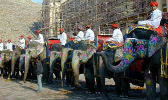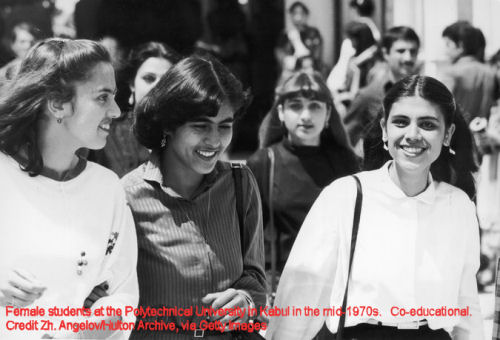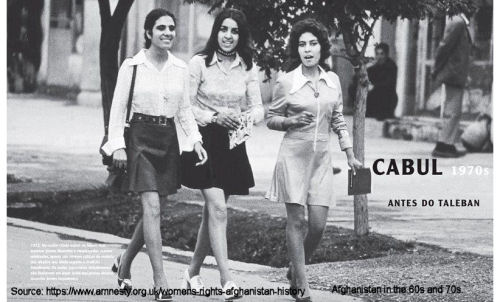What are the reasons for the rapid growth of population after Indian independence?
 This is a very interesting question. Although not familiar with the exact trajectory of India’s demographics over the period, I know of several things that started its population growing beyond what it would have been pre-British colonisation. You can see my books on the subject here: About Sheila Newman, social researcher I would also really like to have some more details and discussion on Indian demographic history, so anyone with ideas, please contact me. [This article is based on a question and my answer posted on Quora at https://www.quora.com/What-are-the-reasons-for-the-rapid-growth-of-population-after-Indian-independence]
This is a very interesting question. Although not familiar with the exact trajectory of India’s demographics over the period, I know of several things that started its population growing beyond what it would have been pre-British colonisation. You can see my books on the subject here: About Sheila Newman, social researcher I would also really like to have some more details and discussion on Indian demographic history, so anyone with ideas, please contact me. [This article is based on a question and my answer posted on Quora at https://www.quora.com/What-are-the-reasons-for-the-rapid-growth-of-population-after-Indian-independence]
Here is my explanation:
HENRY JAMES SUMNER AND LAND-TENURE AND INHERITANCE LAWS
For starters, the British rewrote Indian land tenure and inheritance laws to ressemble their own, which promote high population growth. I do not know whether these rewrites left any part of India alone.
Henry James Sumner Maine was the British lawyer who rewrote the laws. As I recall, he believed, correctly, that male primogeniture, increases the chances of capitalism.
HOW DOES PRIMOGENITURE INCREASE POPULATION GROWTH?
The way it does this is to favour the aggregation of land in private hands: only one person inherits the land, and the rest become landless labour, for factories, agriculture, army, religious orders. Land aggregation was also favoured by the fact that women could not inherit land, but their husbands could, so Lord X might marry Miss Y, who had no brothers, then he would get her family fortune. In the 17th century land began to be commodified and land-titles, instead of entailing responsibilities and rights to various members of the local community, were redrafted under a single title holder. Now that title holder could buy and sell land that had previously been kept together by the entailments and rights of others. The excuse, under pareto-sufficiency economics was that, as long as the winner of a dispute put more money into the economy through selling land, then it didn’t matter who lost out in the meantime, even if they died of cold because they had lost their entitlement to cut wood on the property, for instance. That’s how British law works and how it works in all the countries that Britain carried that law to. (In continental Europe, under the Roman law system with Napoleonic civil codes, population growth is largely democratically controlled and the societies remain relatively endogamous and sedentary - especially compared to Britain.)
Male primogeniture also increases the rate of population growth, unless it happens within a sedentery endogamous society where people live on the land and most do not marry. When people cannot for some reason survive on the land, they are forced to wander in search of a living. This breaks up endogamous clans and tribes and causes new marriage opportunities by exposing the wanderers to a larger pool of people, when they might previously have remained in ‘house’ families, where only one couple bred and the rest were aunties and uncles helping, in exchange for home and food.
Before British rule, it is probable that India was composed of many endogamous tribes (or peoples), subdivided into smaller kinship groups of skins or moities. (Note that I use the term ‘tribe’ to indicate a people made up of related clans, not to indicate a non-agricultural society or something.) (Let us leave aside the castes for a moment.) The populations of these tribes and the skins or moities within them would have been much smaller. The tribes would be in part defined by their territory, which would generally remain fixed as the tribes were ‘sedentary’ - meaning did not move around much.
Tribes have rules about marriage that keep their numbers within the limits of their territory and its ability to support people, based on a tension between endogamy (marrying within your clan, skin, tribe) and exogamy (marrying outsiders). (Animals and plants also do this.) [I have a theory as to how they do it and I wrote about it in Sheila Newman: Demography Territory Law: The Rules of Animal and Human Populations and the next book in the series, called Sheila Newman: Demography Territory Law: Land-tenure and the origins of capitalism in Britain, in case you are interested.] I have also published diagrams of how these rules work, if you are interested, at this URL: Overpopulation: Endogamy,Exogamy and fertility opportunity theory
The tension between endogamy and exogamy limits the number of people who actually marry and therefore the fertility rate. Exogamy enlarges your marriage pool and therefore raises growth rate potential.
GENDER SEPARATION AND MALE AND FEMALE LAND
Tribes also have rules and traditions that keep the genders more or less separate and this also reduces marriage opportunity. For instance, men and women of Australian Aborigines often lived in separate quarters, engaged in different activities in different sections of the tribal land. In the Pacific Islands and Africa, and probably everywhere once, men and women had separate land, and even villages. A couple might live together for a while after marriage, but generally the woman went back to her female kin and raised the children, with the boys going to live with the men when they were around six years old.
TRANSPORT TECHNOLOGIES
Different transport technologies mean that you can go further in search of a mate than you could just on foot. So elephants, horses, boats, cars, trains, aeroplanes all contribute to increasing fertility opportunities. The most exogamous systems are cities and the global economy.
BRITISH SYSTEM IMPACT
The British system dispossessed and dispersed endogamous and sedentary tribes, completely breaking their endogamous systems and distancing them from local biofeedback that helped set the algorithms for endogamy/exogamy. The British then imposed inheritance laws that further interrupted the usual way that people inherited the territory they were born on. They probably also changed the land-title system and accelerated land-commodification, developing a financial system that had little relationship to the biophysical qualities of the actual land.
CASTES
Castes seem to be a relic of past invasions and takeovers and the British imperialists were another cast, but fueled by coal and iron.
Pre-British castes existed and intermarried within their own. A ruling caste is probably always smaller in number than the caste they rule over. That is because the ruling caste acts like a dynasty to consolidate their land-holding and power, by intermarrying with close relatives. This means that they have very limited marriage opportunities, but a lot of land and power per person, living in a kind of House system (called cooperative breeding in non-human species) in palaces etc. The people they rule over - the lower caste - is characteristically squeezed into smaller land areas, with less power. It may have once consisted of a large tribe with various skin groups and gender pathways. As the dominated caste is squeezed in together, these pathways and skin divisions get mixed up and broken. Usually there are battles and the deaths of the overtaken tribe cause marriage vacancies. Too many changes to write about here. If the lower caste remains endogamous and sedentary, then its population will be limited. If, however, as under the British system, if finishes up without land and having to work for low wages in cities, it will (a) have increased marriage and fertility opportunities and (b) if there are no laws enforced against child labour, may have a lot of children because their small wages will enhance the household income.
HOW DID ENGLAND GET THIS WAY?
I’ll just add that the British land-tenure and inheritance system of primogeniture, which only changed in the 1920s, was imposed on the British by William the Conqueror, who came from areas of France settled by Vikings in the 19th and 10th century. Under Viking inspired law, Britain was a colonial frontier that had to be defended by knights. The knights received parcels of land from the king in exchange for defending it. Women were not considered to be fighters, so the land and the buildings on it, could only be owned and passed on by men.
After the primogeniture rule changed in the 1920s, the system still tended to dispossess and cause landless labour because there were no rules requiring parents to pass on their estate to their children. (This was the subject of my book, Demography Territory Law 2: Land-tenure and the Origins of Capitalism in Britain, Countershock Press, 2014.) Under Roman law, however, the law compels parents to pass on their estate to children equally to both sexes. This is how land remains relatively proportionately within families and you have male and female inheritance lines. (The French system is the subject of the book I am currently writing which will be called, Demography Territory Law 3: Land-tenure and the Origins of Democracy in France.

 Watching Q&A is an increasingly confusing experience. It would appear, from the questions and the panel responses, to anyone with a perspective of more than 30 years that we have not just been marking time but gone backwards with respect to gender and sexuality, anti-racism and colonialism. There was a sense of enlightenment in the 1970s, when women burned their bras, anthropologists wrote about gender pathways, and women in the Middle East wore miniskirts and went to co-ed universities - but things have gone downhill since. From current discourse as exemplified often on the media and especially on
Watching Q&A is an increasingly confusing experience. It would appear, from the questions and the panel responses, to anyone with a perspective of more than 30 years that we have not just been marking time but gone backwards with respect to gender and sexuality, anti-racism and colonialism. There was a sense of enlightenment in the 1970s, when women burned their bras, anthropologists wrote about gender pathways, and women in the Middle East wore miniskirts and went to co-ed universities - but things have gone downhill since. From current discourse as exemplified often on the media and especially on 


Recent comments